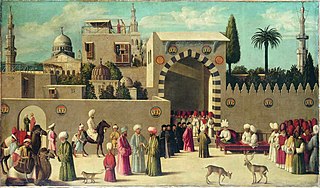
In art history, literature and cultural studies, Orientalism is the imitation or depiction of aspects in the Eastern world. These depictions are usually done by writers, designers, and artists from the West. In particular, Orientalist painting, depicting more specifically "the Middle East", was one of the many specialisms of 19th-century academic art, and the literature of Western countries took a similar interest in Oriental themes.

Beaujolais is a French Appellation d'Origine Contrôlée (AOC) wine generally made of the Gamay grape, which has a thin skin and is low in tannins. Like most AOC wines they are not labeled varietally. Whites from the region, which make up only 1% of its production, are made mostly with Chardonnay grapes though Aligoté is also permitted until 2024. Beaujolais tends to be a very light-bodied red wine, with relatively high amounts of acidity. In some vintages, Beaujolais produces more wine than the Burgundy wine regions of Chablis, Côte d'Or, Côte Chalonnaise and Mâconnais put together.
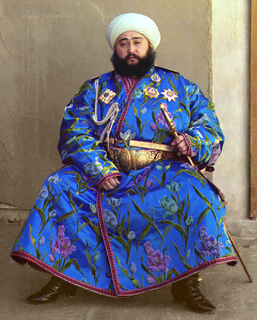
A turban is a type of headwear based on cloth winding. Featuring many variations, it is worn as customary headwear by people of various cultures. Communities with prominent turban-wearing traditions can be found in the Indian subcontinent, Southeast Asia, the Arabian Peninsula, the Middle East, the Balkans, the Caucasus, Central Asia, North Africa, West Africa, East Africa, and amongst some Turkic peoples in Russia as well as Ashkenazi Jews.
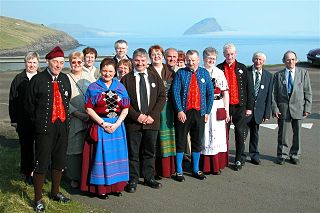
A folk costume expresses an identity through costume, which is usually associated with a geographic area or a period of time in history. It can also indicate social, marital or religious status. If the costume is used to represent the culture or identity of a specific ethnic group, it is usually known as ethnic costume. Such costumes often come in two forms: one for everyday occasions, the other for traditional festivals and formal wear.

Auxonne is a commune in the Côte-d'Or department in the Bourgogne-Franche-Comté region of eastern France. The inhabitants of the commune are known as Auxonnais or Auxonnaises.

Burgundy wine is made in the Burgundy region of eastern France, in the valleys and slopes west of the Saône, a tributary of the Rhône. The most famous wines produced here—those commonly referred to as "Burgundies"—are dry red wines made from pinot noir grapes and white wines made from chardonnay grapes.

Circassian beauty or Adyghe beauty is a stereotype and a belief used to refer to an idealized image of the women of the Circassian people of the Northwestern Caucasus. A fairly extensive literary history suggests that Circassian women were thought to be unusually beautiful, spirited, and elegant, and as such were desirable as concubines.
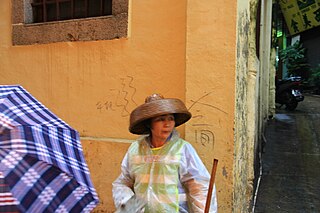
The Tankas or boat people are a sinicized ethnic group in Southern China who have traditionally lived on junks in coastal parts of Guangdong, Guangxi, Fujian, Hainan, Shanghai, Zhejiang and along the Yangtze river, as well as Hong Kong, and Macau. The Boat people are referred to with other different names outside of Guangdong. Though many now live onshore, some from the older generations still live on their boats and pursue their traditional livelihood of fishing. Historically, the Tankas were considered to be outcasts. Since they were boat people who lived by the sea, they were sometimes referred to as "sea gypsies" by both Chinese and British. Tanka origins can be traced back to the native ethnic minorities of southern China known historically as the Baiyue who may have taken refuge on the sea and gradually assimilated into Han culture. However, Tanka have preserved many of their native traditions that are not found in Han Chinese culture.
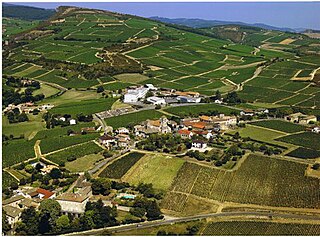
The Mâconnais district is located in the south of the Burgundy wine region in France, west of the Saône river. It takes its name from the town of Mâcon. It is best known as a source of good value white wines made from the Chardonnay grape; the wines from Pouilly-Fuissé are particularly sought-after. Almost all the wine made in the Mâconnais is white wine. Chardonnay is the main grape grown in the district—in fact, there is a village of that name in the far north of the region. Some plantations of Gamay and Pinot noir are made into red and rosé Mâcon, making up no more than 30% of the total wine production. Gamay is grown in the Beaujolais cru of Moulin-à-Vent, which extends into the Mâconnais, but has little in common with the wines north of the border.

Ottoman clothing or Ottoman fashion is the style and design of clothing worn by the Ottoman Turks.
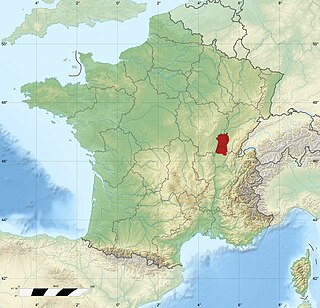
Bresse is a former French province. It is located in the regions of Auvergne-Rhône-Alpes and Bourgogne-Franche-Comté of eastern France. The geographical term Bresse has two meanings: Bresse bourguignonne, which is situated in the east of the department of Saône-et-Loire, and Bresse, which is located in the department of Ain. The corresponding adjective is bressan, and the inhabitants are Bressans.

Serbian traditional clothing, also called as Serbian national costume or Serbian dress, refers to the traditional clothing worn by Serbs living in Serbia, Croatia, Bosnia and Herzegovina, Montenegro, and the extended Serbian diaspora communities in Austria, Australia, Bulgaria, Canada, France, Germany, Greece, Hungary, North Macedonia, Romania, Russia, Slovenia, United States, etc. Like any traditional dress of a nation or culture, it has been lost to the advent of urbanization, industrialization, and the growing market of international clothing trends. The wide range of regional folk costumes show influence from historical Austrian, Hungarian, German, Italian, and Ottoman Turkish presence. Nonetheless, the costumes are still a pinnacle part of Serbian folk culture. From the 19th century and onwards, Serbs have adopted western-styled clothing. This change has started in larger settlements such as cities and towns, although it was not uncommon to see rural women in traditional working costumes all the way until the end of President Josip Broz Tito's term. Today, these national costumes are only worn by some elderly in rural areas but are most often worn with connection to special events and celebrations, mostly at ethnic festivals, religious and national holidays, weddings, tourist attractions, and by dancing groups who dance the traditional Serbian kolo, or circle dance.

A chokha also known as the cherkeska is a woolen coat with a high neck that is part of the traditional male dress of peoples of the Caucasus. It was in wide use among Nogais, Abazins, Abkhazians, Azerbaijanis, Armenians, Balkars, Georgians, Ingush, Chechens, Ossetians, Tats, Karachais, Circassians (Adyghes), the peoples of Dagestan, as well as Terek and Kuban Cossacks.
Guerin, Garin, Warin, or Werner was the Count of Auvergne, Chalon, Mâcon, Autun, Arles and Duke of Provence, Burgundy, and Toulouse. Guerin established the region against the Saracens from a base of Marseille and fortified Chalon-sur-Saône (834). He took part in many campaigns during the civil wars that marked the reign of Louis the Pious (814–840) and after his death until the Treaty of Verdun (843). The primary sources for his life are charters and chronicles like the Vita Hludovici.

Fashion from 1910–1919 in the Western world was characterized by a rich and exotic opulence in the first half of the decade in contrast with the somber practicality of garments worn during the Great War. Men's trousers were worn cuffed to ankle-length and creased. Skirts rose from floor length to well above the ankle, women began to bob their hair, and the stage was set for the radical new fashions associated with the Jazz Age of the 1920s.

Palestinian costumes are the traditional clothing worn by Palestinians. Foreign travelers to Palestine in the 19th and early 20th centuries often commented on the rich variety of the costumes worn, particularly by the fellaheen or village women. Many of the handcrafted garments were richly embroidered and the creation and maintenance of these items played a significant role in the lives of the region's women.

Athée is a commune in the Côte-d'Or department in the Bourgogne-Franche-Comté region of eastern France.

Matour is a commune in the department of Saône-et-Loire in Bourgogne-Franche-Comté, France. Its territory is classified Natura 2000. The commune is located in a zone de revitalisation rurale.

The taqiyah or araqchin is a short, rounded skullcap. It is often worn for religious purposes; for example, Muslims believe that the Islamic prophet Muhammad used to keep his head covered, therefore making it mustahabb. Muslim men often wear them during the five daily prayers.

The keffiyeh or kufiya also known in Arabic as a ghutrah (غُترَة), shemagh, ḥaṭṭah (حَطَّة), or mashadah (مَشَدَة), and in Farsi as a chafiyeh (چفیه), is a traditional Middle Eastern headdress, or what is sometimes called a habit.


















